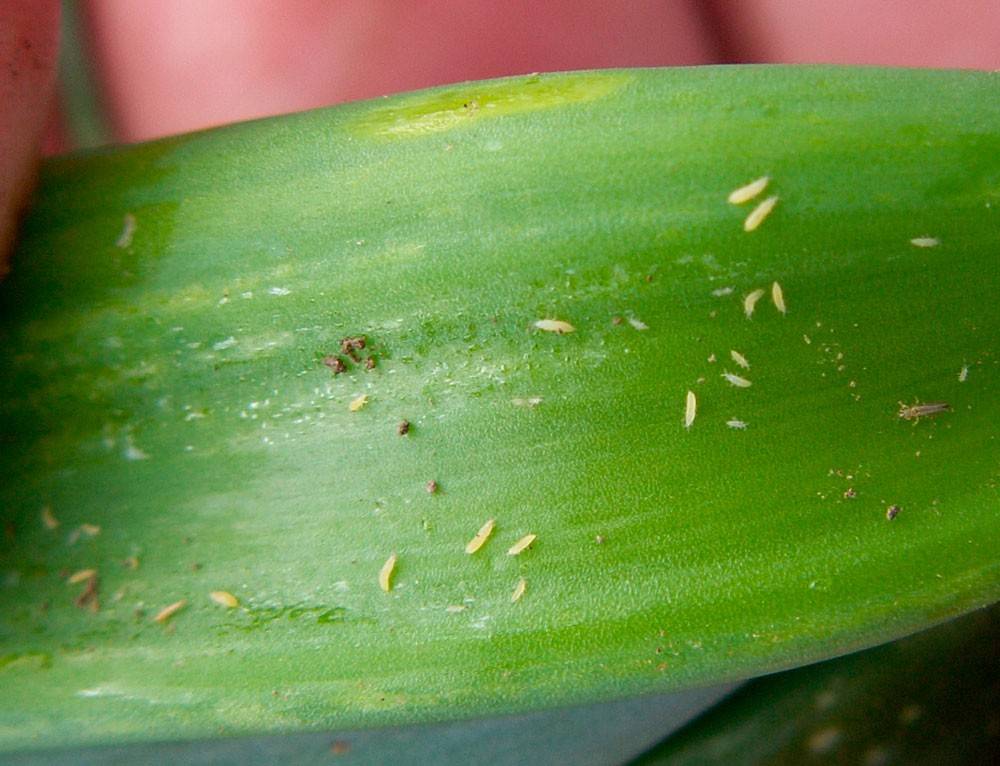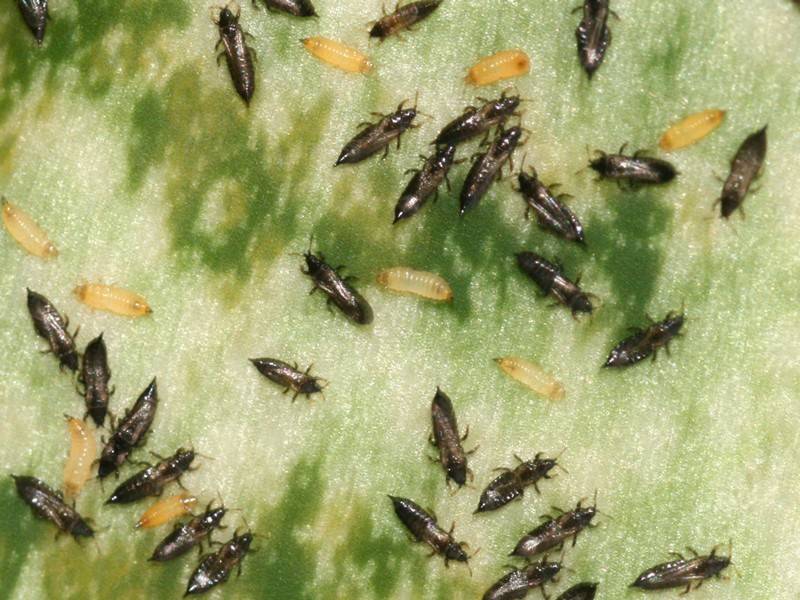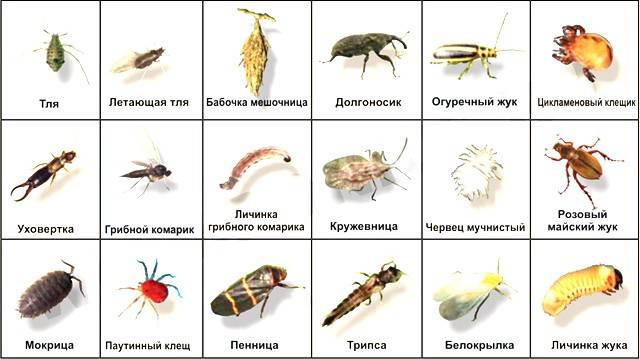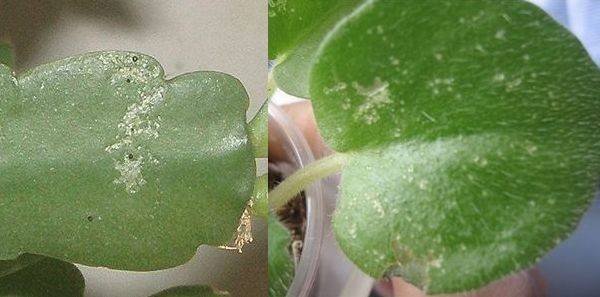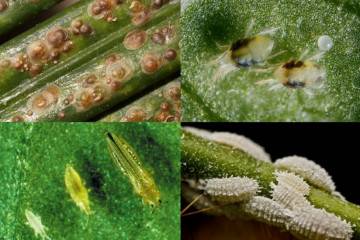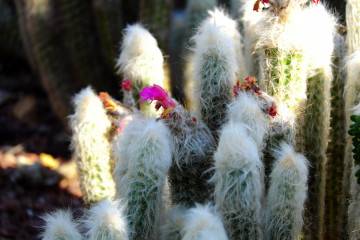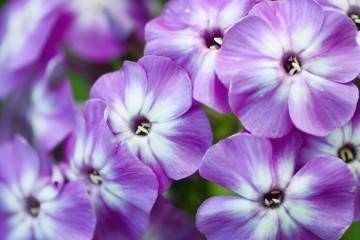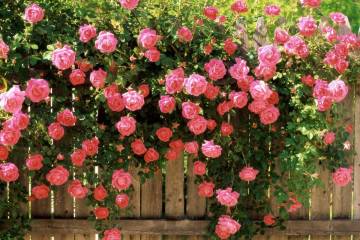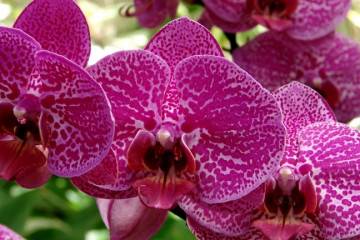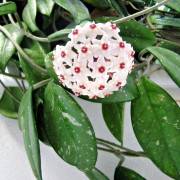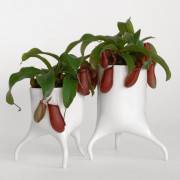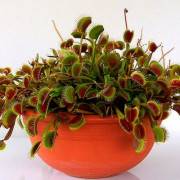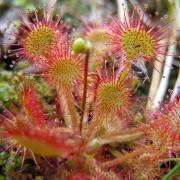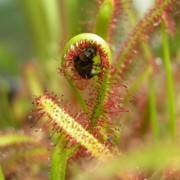Thrips on indoor plants: options for how to get rid of
Content:
Thrips are very dangerous pests. They live in numerous colonies, and their population is growing rapidly. If insects have chosen a plant, then without proper opposition they can destroy it. Thrips can attack green spaces outside and indoor flowers. It will take a lot of effort to get rid of them. This activity is very tedious, but if you do nothing, then even the strongest and healthiest plant will stop growing and die under the influence of parasites.
Description of thrips
To start fighting thrips, you need to know that it was they who attacked the flower. Therefore, you should know how they look and what types of pests exist. Although at the moment there are so many species of insects, they all have common features and characteristics.
The body of an adult can reach 2 mm in length and be light yellow, brown or black. They also have quite clearly visible two pairs of wings covered with hairs. Insect larvae most often have a light green color and are no more than 1 mm in length. The parasites feed on plant sap. To do this, they have bristles in the oral cavity, with which they pierce the surface of the leaves. With the help of their wings, they can quickly move from one bush to another. They cling to the surface of the bush with claws and suction cups.
Of the huge number of species, the main ones stand out, which usually attack house flowers:
- California flower thrips. Initially, it appeared in the tropics and in the Russian latitudes, a rather rare visitor. More often it can be found in horticultural crops grown in greenhouses. This species is characterized by long antennae and two pairs of wings, the upper ones of which are pointed at the edges. The body is yellow or light brown.
- Tobacco. Most often it can be found in the south of the country. This is the smallest representative, its size does not even reach 1 mm. The color can be light yellow or brown.
- The decorative type is the most common in the north and central part of the country. An adult reaches a size of 2 mm and has a brown body. This type of thrips is most dangerous for orchids, monsters and dieffenbachia.
- Dracene. From the name it is clear that he prefers to eat dracaena juice. Also, do not mind settling on hibiscus and ficus. It lives mainly in the northern regions, is small in size and dark yellow or brown in color.
- Common is the most common pest. Prefers to settle on buds and flowers of plants. The color of the body is dark brown, no more than 1 mm in length.
- Bulbous is common in all CIS countries. As a food source, he prefers the cultures of the Liliev family. It differs from the rest in its large size - up to 2.3 mm and black color.
For the correct fight against parasites, it is necessary to find out the reasons for their appearance on flowers in the house.
Reasons for the appearance on indoor plants
There may be several options for the appearance of insects on home flowers:
- The most common option is through a window. This is facilitated by the presence of nearby trees and bushes. With the help of wings and wind, they can easily get inside the apartment and settle on plants.
- The appearance of thrips as a result of the acquisition of a new flower.This is especially true for greenhouse and greenhouse plants such as phalaenopsis, asparagus, hydrangea and others. Therefore, all experienced gardeners place a new bush in a separate room and monitor it for several days.
- Garden soil. When transplanting home flowers, many use soil from the garden plot, without thinking that pests may be there.
Thrips on indoor plants: how to fight at home
When these insects appear, it will not be easy to get rid of them. In this case, at the first signs of infection, you need to perform a set of necessary actions:
- When parasites are found on flowers, they are immediately cut off.
- The affected plant is transferred to a separate room, and those growing next to it are checked for insects.
- The top layer of soil is removed from the pot and replaced with a new one.
- The plant is washed under the shower or wiped with a damp cloth. For greater effect, you can use soapy water instead of water.
- After the moisture has evaporated, the soil is treated with insecticides and covered with a film.
- The plant is treated with the selected preparation.
- The flower pot is left in a separate room in order to ensure recovery.
In case of severe damage, it is better to use chemical preparations. The most effective of them are Akarin, Vertimek, Karbofos, Fitoferm.
In the event that the infection is detected at the initial stage, you can use folk remedies. In this case, the result will have to wait a long time and they can be unpredictable. What to do when thrips appear on orchids and other plants loved by flower growers?
Soap solution
It is better for him to use laundry soap. The whole plant is covered with the solution. Under its cover, pests cannot move and breathe. After 15 minutes after application, the soap foam must be wiped off, and the plant then rinsed well with water.
Garlic
Quite popular with gardeners in pest control. The plant must be sprayed with a solution. To do this, take 5 pressed cloves of garlic, which are mixed with a glass of water and infused for two days. Apply no more than once a week.
Mustard
One teaspoon of mustard powder is mixed with a liter of water. The resulting solution is sprayed onto the ground to fight the larvae.
Also used are solutions based on tobacco, pepper, onions. But all these methods are not always effective, so it is better to immediately start treatment with chemicals or take preventive measures.
Disease prevention
To protect the plant from pests, it is enough to take the following measures:
- Provide the flowers with the required moisture level.
- Regularly inspect the plant for the appearance of larvae or adults of thrips.
- Arrange a shower for flowers at least once a month.
- Spread the fly strips on the ground. They will help to detect the appearance of insects in time.
It is important to remember that preventing thrips from emerging is much easier than fighting them. Using a number of preventive measures, you can protect your home plants from the appearance of this harmful insect.
